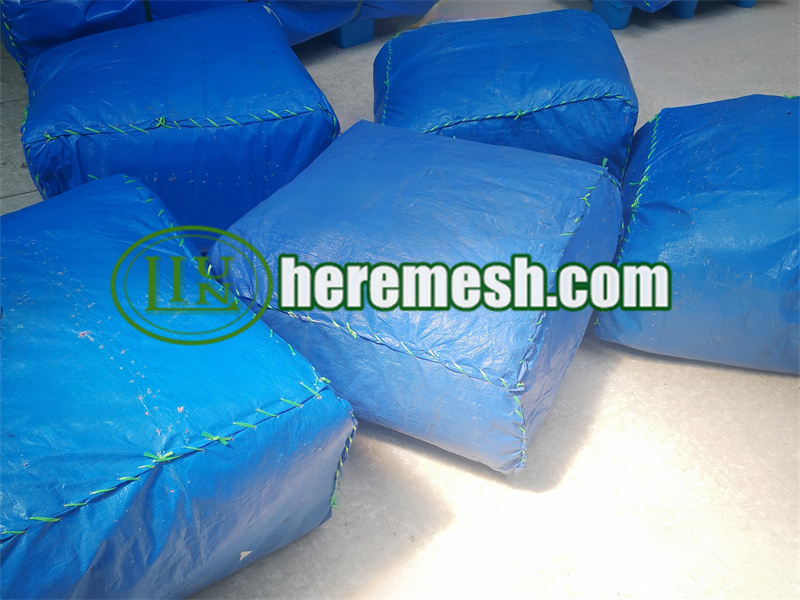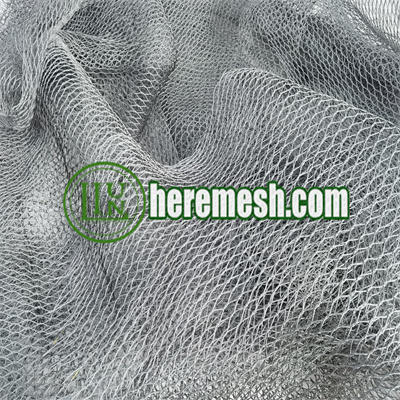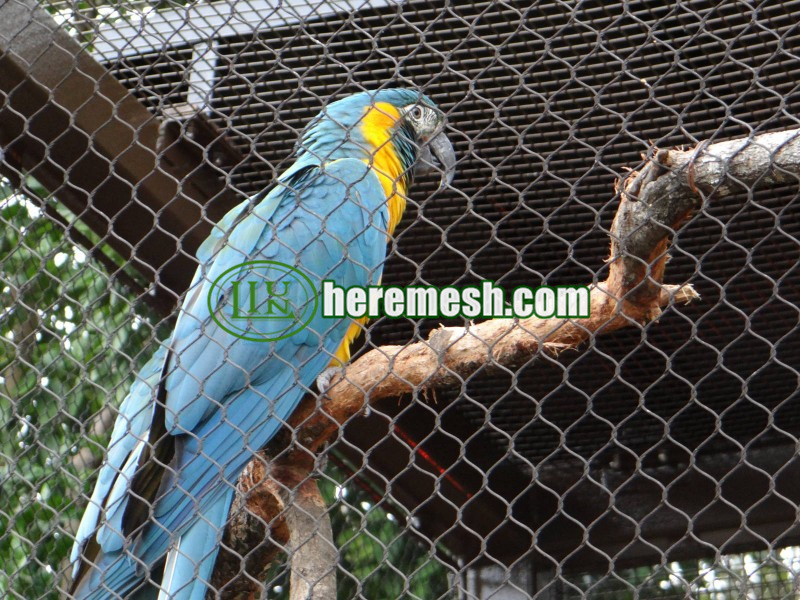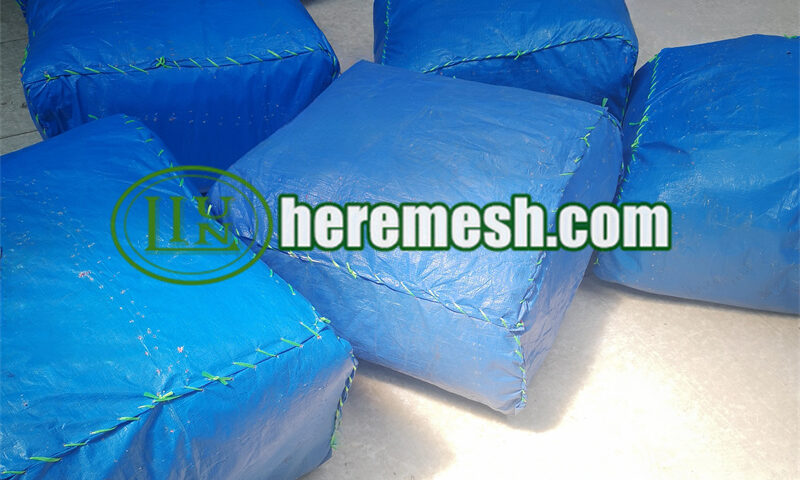The Key Role of Aviary Netting Order in Aviary Construction

Ecological Stainless Steel Zoo Animal Enclosure in Zoos
05/27/2025
Reliable and Flexible Stainless Steel X-tent Ferrule Mesh
06/06/2025The selection and procurement of aviary netting is a crucial part of the aviary construction process. It not only determines the safety, durability and functionality of the aviary, but also directly affects the survival environment of birds and the viewing experience of tourists. Stainless steel rope mesh has become the preferred material due to its advantages of strength, corrosion resistance and long life. This article will analyze the complete process of aviary netting order in detail with the help of this month’s order shipment details. From the initial inquiry, supplier selection, negotiation to the final shipment confirmation, to help buyers efficiently complete the order, to ensure the smooth construction of aviary. This article will also systematically explain the core function of stainless steel rope mesh in the construction of aviary, procurement of key elements, to provide reference for users.
Stainless steel bird netting order delivered to Poland
This month’s order for stainless steel bird netting was completed for delivery. The order is for a Polish user to order bird protection netting for his bird aviary. The customer was interested in our products and contacted us through our website. The user asked us to recommend a safe and non-toxic cage net for his birds. After many discussions with the user, the customer finally chose our stainless steel aviary mesh as his first choice.


The core function of stainless steel bird netting in aviary construction
1. Security to prevent birds from escaping
The first priority of birdhouses is to ensure that birds cannot escape, while preventing the intrusion of external natural enemies (e.g. cats, raptors, etc.). Stainless steel rope mesh has high tensile strength and flexibility. The mesh aperture can be customized according to the size of birds (usually 15mm-60mm). The appropriate mesh aperture ensures that small birds cannot burrow out, while large birds cannot damage it.
2. Strong weather resistance, adapted to long-term outdoor use
Ordinary nylon or polyethylene nets are susceptible to ultraviolet rays, rain and extreme temperatures, and will age and break within a few years. While stainless steel bird netting (usually made of 304 or 316) has strong corrosion resistance and can withstand temperature changes from -40℃ to 80℃. The service life of stainless steel birdhouses can reach 15-20 years, significantly reducing maintenance costs.
3. Visually permeable without compromising the viewing experience
Aviaries in zoos or eco-houses need to take into account both safety and viewing. Stainless steel rope mesh has low reflectivity and is almost invisible from a distance, so visitors can clearly observe the natural behavior of the birds. The birds will not have a stress reaction due to the reflectivity of the mesh.
4. Stable structure, wind and impact resistance
Large aviaries need to withstand strong winds, snow and other external forces. Stainless steel rope mesh has an elastic woven structure that can buffer the impact of wind and prevent the whole mesh from failing due to partial breakage. Some high-end projects even use double-layer mesh structure to further enhance safety.
5. Environmentally friendly and harmless, in line with animal welfare standards
The surface of the high quality stainless steel rope mesh is smooth and burr-free, avoiding birds from collision and injury. In addition, its material does not contain harmful substances. It meets the safety requirements of the International Association of Zoological Gardens and animal protection organizations.


Key elements of bird netting procurement
The key elements of bird aviary netting procurement involves a number of aspects, need to comprehensively consider the actual needs and use of the scene. When purchasing stainless steel rope netting, the following factors need to be considered comprehensively to ensure that the selection is correct and the cost is controllable.
1. Purpose of procurement
First of all, we should clarify the purpose of procurement and environmental conditions, different uses of the mesh material, mesh size requirements vary. UV resistance, corrosion resistance and other properties directly affect the service life, especially in the outdoor long-term exposure of the environment. 304 material cost-effective, suitable for general climate environment. 316 material is more corrosion-resistant, suitable for high humidity and harsh environments. Compared with other materials, stainless steel material is environmentally friendly and safe to avoid harming the health of birds.
Secondly, the mesh size should be scientifically designed according to the size of the target birds. Too large a mesh may lose its protective effect, while too small a mesh may accidentally injure small birds or interfere with ventilation and light. For small-sized birds, the mesh aperture should be 15mm-25mm. For medium-sized birds, the mesh aperture should be 30mm-51mm. For large-sized birds such as cranes, ostriches or flamingos, the mesh aperture can be bigger according to the size of the birds.
2. Surface treatment methods
Ease of installation, post-maintenance costs and recyclability are also factors that should not be overlooked. If large-scale deployment is involved, the match between cost and budget needs to be carefully evaluated. In the field of ecological protection, special attention should also be paid to the visual color rendering of bird netting. High-contrast colors can interfere with bird flight paths. Stainless steel bird netting can be oxidized to turn the original color of stainless steel netting into black stainless steel oxidized netting. Oxidized bird netting is less harsh and closer to the natural environment. Under the premise of meeting the functional requirements, the solution with the least ecological impact on birds should be prioritized, taking into account the practicality and ecological ethics.
3. Tensile strength
The tensile strength of bird netting is closely related to the safety factor of bird houses. Tensile strength is a key indicator of the ability of stainless steel nets to withstand tensile force. The greater the tensile strength the greater the stability of the bird netting under strong winds or external forces. A higher safety factor provides greater security but may increase the cost. Therefore, the appropriate tensile rating needs to be selected according to different application scenarios.
Professional aviary netting installation and maintenance essentials
The installation and maintenance of stainless steel aviary netting requires professional technology and meticulous operation to ensure its long-term durability and safety.
1. Professional installation team
The tension balance and fixing method of bird netting directly affect the service life and safety performance. When installing, choose a professional installation team to select the appropriate fixing method according to the structure and environment of the aviary. Ensure that the net surface is taut without slackness to avoid deformation or breakage caused by wind or bird activities. Pay attention to the flatness of the mesh surface during installation to avoid localized depressions or bumps, so as to avoid bird collision injuries or uneven force on the mesh surface.
2. Regular Inspection System
Administrators need to regularly inspect the mesh surface for damage, and find and repair worn or loose parts in a timely manner. Especially after bad weather, need to check whether there is loose, rust or broken.
3. Cleaning and maintenance
According to the material characteristics of the development of cleaning programs to prevent the accumulation of dirt affecting the service life. Although stainless steel corrosion resistance, but in high humidity environment may still appear pitting or stress corrosion, it is recommended that every six months with water rinse to remove dirt. If localized rust is found, special stainless steel cleaner can be used to deal with it, and check whether the protective layer is damaged due to mechanical damage.
Through standardized installation and maintenance, stainless steel aviary netting can significantly extend the service life and protect the safety of birds and the function of bird houses.
Conclusion
Quality bird aviary netting orders are the basis for building aviaries that are functional, safe and ornamental. With the development of material science and design concepts, modern stainless steel birdhouses create artificial habitats for birds that are closer to nature. Investing in high-quality bird netting is not only a safeguard for the welfare of birds, but also a wise choice to enhance the visitor experience and extend the service life of the facility. When planning a aviary project, sufficient attention and professional consideration should be given to the selection and procurement of aviaries.


